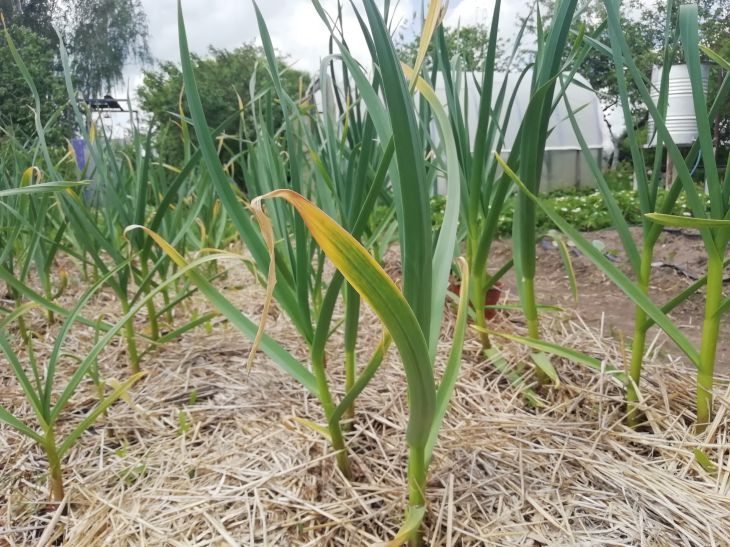Many people plant garlic in the fall, but if you want to get fist-sized heads, try spring planting.
Yes, March garlic not only has time to ripen, but also accumulates more essential oils, which make it more aromatic.
The whole secret is in the long growing season and proper preparation of the cloves.

When garlic is planted in the spring, it avoids winter stress: freezing, over-watering and rodent attacks.
A month before planting (in February), separate the heads into cloves, select the largest and most undamaged ones.
Wrap them in a damp cloth, place them in a bag and put them in the refrigerator for 3-4 weeks. This simulates winter stratification and awakens the growth points.
In March, as soon as the soil thaws to a depth of 10 cm, make a bed: dig up the soil with humus and ash (1 bucket and 2 glasses per square meter).
Plant the cloves at a depth of 5–7 cm, with a distance of 15 cm between them. Water with warm water and mulch with peat.
Spring garlic grows more slowly than winter garlic, so in May feed it with a solution of chicken manure (1:15), and in June - with potassium sulfate (1 tablespoon per 10 liters of water).
To ensure large heads, break off the stems in July and rake the soil away from the roots - this will give them space to grow.
Those who plant garlic in March harvest it at the end of August. The heads are dense, with 8-10 cloves, and are stored until spring.
And if you add a pinch of sand to the holes when planting, this will protect the garlic from rot.
